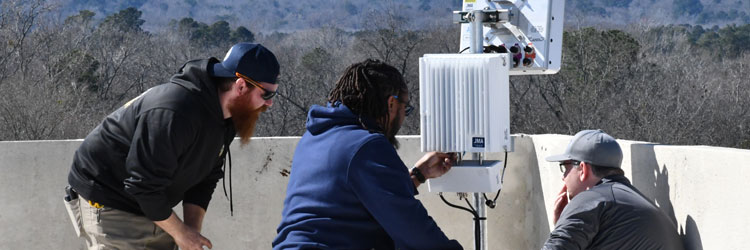By J. Sharpe Smith, Inside Towers Technology Editor
The following article on public safety communications strategy and solutions was published by Inside Towers on December 5, 2023 and is shared here with the permission of the publisher.
The number of jurisdictions with fire codes mandating public safety DAS (Distributed Antenna System) in buildings is growing as owners increasingly recognize their life-saving capabilities in crisis situations. However, these codes can differ from one state to the next, between two adjoining counties, or even one town over. The inconsistency can cause confusion among building owners regarding the deployment of Emergency Responder Communication Enhancement Systems (ERCES) in newly built facilities.
Founded in 2002, Pierson Wireless has an in-depth understanding of the building codes that impact the ERCES required in a new building. The telecom systems integrator focuses on the design, development, and construction of wireless solutions and service deployments to meet those codes and ensure real-time, mission-critical communications for first responders when it matters most.
Clarity Through Customer Education
Pierson Wireless works closely with the Authorities Having Jurisdiction (AHJ) that are responsible for enforcing fire codes to document a building’s public safety communications requirements. They thoroughly detail that information to building owners and general contractors.
Building owners need to have an ERCES designed to address the fire code fully installed to receive a certificate of occupancy, according to Scott Kamrath, Sr. Director of Advanced Solutions at Pierson Wireless. “”Our hope is, with more adoption of building codes and more consistency, everybody will learn about the mandate for these critical systems upfront versus later in the game,” he said. “The certificate of occupancy for a new building is something that nobody wants delayed.”
Smaller jurisdictions may not have a mandate for new buildings, but Pierson Wireless can provide education and direction on best practices. It leverages the latest building codes and mandates and consults with building owners on the radio system deployment. “We want to guide them so that they have all the components of a code-compliant system with the proper battery backups, monitoring and alarming,” said Jeff Tidwell, Program Manager, Public Safety at Pierson Wireless.
The Need for Speed
Sometimes, building owners wait until the last minute to deploy a public safety radio system before they move in, which can lead to a rushed installation. To address this issue and expedite the process, Pierson Wireless has created prefabricated ERCES solutions in a variety of sizes and form functions. One such option is a Public Safety DAS kit on a four-foot-square board that was developed and engineered to cover up to 200,000 square feet in a single building.
“The Public Safety DAS kit is a code-compliant and cost-effective solution that we can engineer, design and deploy within 30 days,” explained Kamrath. “Everything is pre-assembled and very easy to deploy in the field.” The robust system is NEMA 4X rated and can withstand inclement weather and water from a fire sprinkler system or fire departments’ hoses.
Pierson Wireless has also established a procedure to deploy an ERCES. The first step is to identify the unifying AHJ and the building makeup. Next, a site survey, baseline testing and grid testing are performed. After that, Pierson Wireless develops a design to meet the current codes. Then, a purchase order is signed, and equipment is ordered.
“We have a pre-construction kickoff with the operations team, and then the project goes through the installation phase, commissioning, and system acceptance with the local radio shop and the AHJ,” Kamrath said.
Pierson Wireless Public Safety DAS supports 700 MHz and 800 MHz frequencies at software-configurable power levels from a half-watt up to 2 watts, according to Tidwell. The public safety repeater comes pre-installed on a board with an AC-powered 24-hour battery.
“Pierson Wireless is OEM agnostic and we can cover whatever equipment specs the AHJ specifies and or the condition of the deployment,” Tidwell said. “Each project is unique and is dependent on the requirements. As far as the Bidirectional Amplifier goes, we can kit it all with the necessary coax splitter couplers in the outdoor donor antenna, as well as any server antennas or indoor antennas.”
Modems are highly recommended and can be added for remote monitoring, on top of the code-compliant alarm connections. Pierson Wireless offers a variety of monitoring and management programs that ensure the ERCES continues to operate at optimal levels. Technicians can proactively identify issues and outline solutions before a breakdown occurs. Active monitoring solutions result in reduced expenses related to service visits and improved system performance.
A Solution for the Greater Good
Pierson Wireless is seeing increased deployment of public safety DAS in bigger facilities, such as healthcare institutions, education facilities, and large event centers or campuses. “Venue owners are starting to look at what happens if there is a public safety emergency,” Ross Pierson, President and owner of Pierson Wireless said. “They are looking to provide wireless coverage and a safe environment for first responders to address an issue inside of their building. We feel those two things – ERCES and reliable cellular coverage – work hand-in-hand in any emergency situation. Cellular is leveraged for the initial call for assistance, and the ERCES ensures first responders have the communication support they need to coordinate a response across their frequencies.”
The bulk of emergency radio communications system deployments are in new or newly renovated buildings. But Pierson notes that his company is also seeing very targeted approaches to retrofit existing buildings, namely schools and high-capacity venues, where wireless coverage for first responders enhances safety in case of an emergency. “These are life-saving systems and need to be taken seriously,” he said.




























Leave A Comment